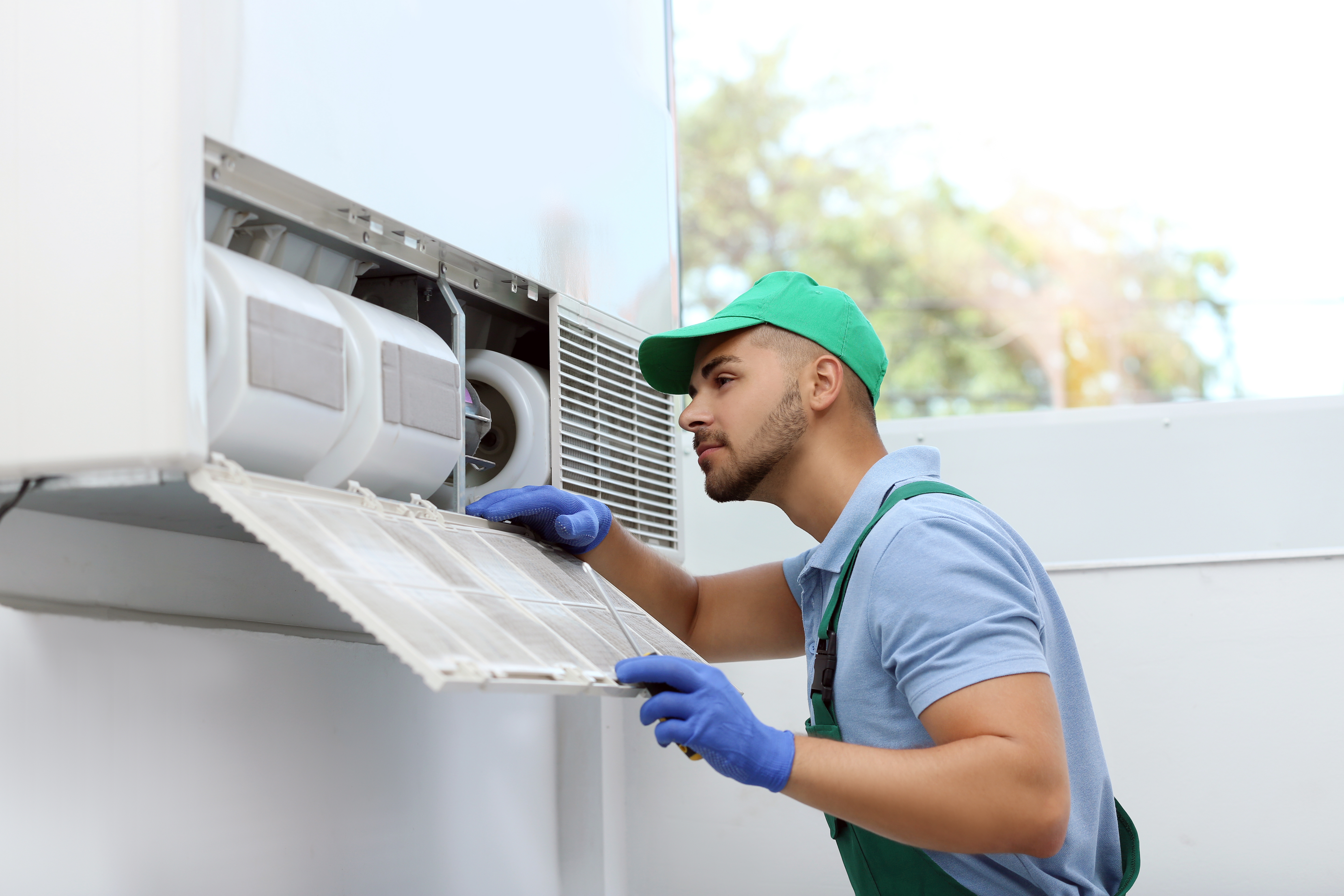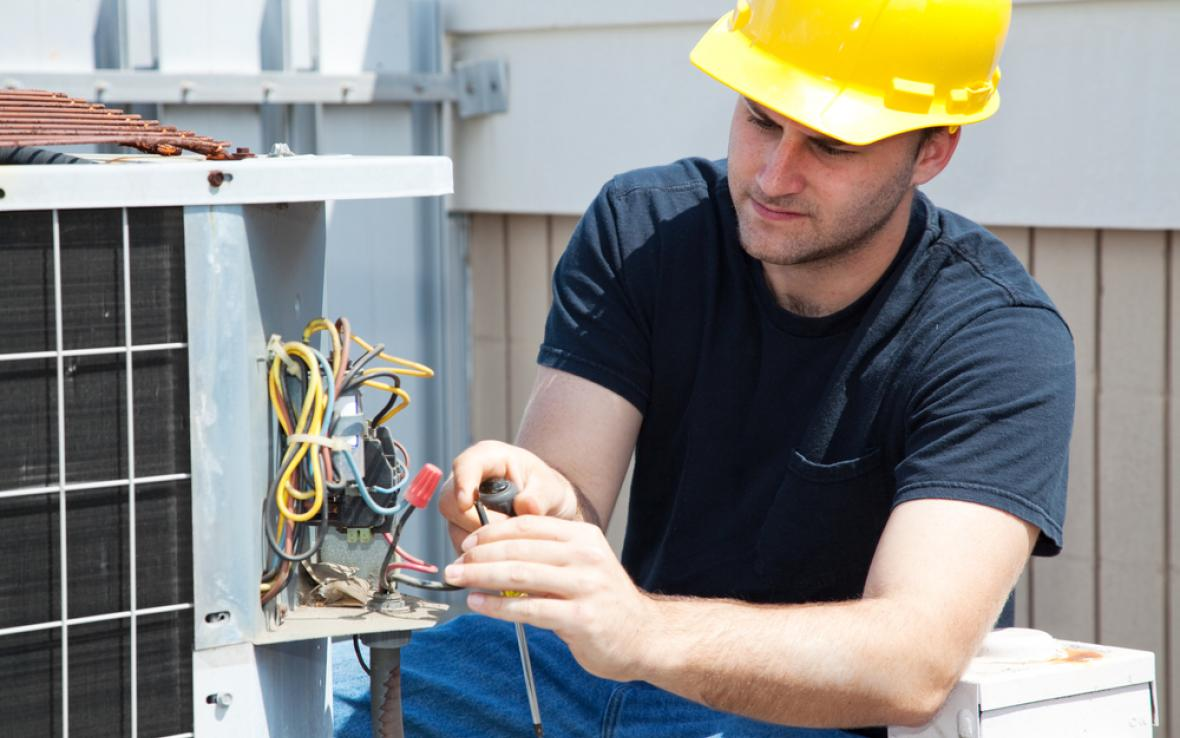Enhance Indoor Air Quality with DMAKS HVAC Professional Assistance.
Enhance Indoor Air Quality with DMAKS HVAC Professional Assistance.
Blog Article
How to Choose the Right Heating And Cooling System for Your Needs
Picking the proper HVAC system is a vital decision that needs mindful consideration of numerous aspects. The myriad of system kinds readily available can complicate this process, leading one to question which course inevitably leads to optimum comfort and efficiency.
Evaluate Your Home Size
Analyzing your home dimension is an essential initial step in selecting the proper cooling and heating system. The dimension of your home straight affects the cooling and heating ability required for efficient climate control. A cooling and heating system that is also tiny will certainly battle to preserve comfortable temperatures, leading to raised power consumption and endure the unit. Conversely, a large system can cause brief biking, inadequate humidity control, and inefficient procedure.
To precisely evaluate your home size, measure the square video footage of each area, taking into consideration factors such as ceiling elevation and the design. In addition, consider the insulation top quality and the variety of windows, as these elements impact thermal efficiency. Houses with open flooring plans might call for various system setups compared to those with lots of divided spaces.
Utilizing the Manual J lots estimation method can offer a more exact estimate of your HVAC needs. This technique accounts for various factors, consisting of local environment, solar gain, and occupancy patterns. By meticulously examining these aspects, you can make certain that your picked cooling and heating system is properly sized, resulting in boosted convenience, power effectiveness, and durability of the tools.
Determine Your Spending Plan
Establishing your budget plan is an essential action in the heating and cooling system option process, as it sets the parameters for your alternatives - DMAKS HVAC. A HVAC system is a substantial investment, and understanding your financial limits will certainly help limit choices that fit within your methods
Begin by evaluating not just the first purchase rate however also setup expenses, which can differ dramatically depending on the complexity of the task. Additionally, think about recurring costs such as maintenance, repairs, and power intake. A system may appear budget-friendly at first but can result in higher costs with time if it is less effective.
It is advisable to assign a contingency fund for unforeseen expenses that might arise during setup or initial system adjustments (DMAKS HVAC). In addition, explore funding options or rebates that may be offered, as these can reduce the problem of ahead of time costs
Eventually, having a clear budget plan enables you to engage with cooling and heating experts extra successfully, ensuring you receive tailored recommendations that lines up with your financial objectives and home needs. By being persistent about your budget plan, you can make educated decisions that improve comfort without jeopardizing financial stability.
Evaluate Power Effectiveness
Power performance plays an important function in the general efficiency and cost-effectiveness of your A/c system. Look for systems with a high Seasonal Power Effectiveness Proportion (SEER) for cooling down and a high Annual Gas Application Efficiency (AFUE) rating for home heating.
Additionally, consider the Power Star accreditation, which represents that the system satisfies rigid efficiency guidelines established by the Environmental Defense Agency. Purchasing a Power Star-rated useful reference a/c system can result in substantial financial savings gradually, especially in areas with severe temperature fluctuations.
One more factor to review is the system's dimension and capacity. An oversized or small system can lead to inadequacy and increased power costs. DMAKS HVAC. Appropriate sizing, frequently identified via a Manual J lots computation, makes certain that the system runs at ideal efficiency


Consider Climate and Atmosphere
When official site picking a heating and cooling system, it is critical to take into consideration the neighborhood climate and environmental conditions, as these factors considerably influence the system's performance and effectiveness. Different areas experience varying temperature level extremes, humidity degrees, and seasonal changes, every one of which impact heating and cooling demands.

Moreover, regional ecological elements, such as air high quality and possible allergens, ought to educate your option. Systems equipped with innovative filtering modern technologies can aid mitigate pollutants and supply cleaner air. In addition, take into consideration the energy sources available in your area-- some cooling and heating systems are a lot more reliable when powered by gas or renewable resource resources.
Ultimately, straightening your HVAC system selection with your local environment and environmental considerations will bring about enhanced convenience, boosted performance, and reduced power expenses.
Explore System Types and Features
As home owners look for to maximize convenience and performance, checking out the different sorts of a/c systems and their distinct functions becomes crucial. The primary types of cooling and heating systems consist of main air conditioning, heatpump, ductless mini-split systems, and furnaces. Each system uses distinctive advantages customized to various requirements and preferences.
Central air conditioning systems give uniform cooling throughout a home, making them ideal for larger spaces. Heatpump act as both heating over at this website and cooling services, making use of power to move warmth, which can result in reduced power costs. Ductless mini-split systems are ending up being significantly preferred as a result of their flexibility and convenience of installment, allowing homeowners to control the temperature level in specific areas without extensive ductwork.

Final Thought
Finally, selecting the suitable HVAC system demands cautious factor to consider of different elements, consisting of home dimension, budget plan constraints, power performance, neighborhood environment, and offered system types. A comprehensive analysis of these components makes sure optimum comfort and cost-effectiveness. By adhering to a structured method, property owners can make informed decisions that align with their specific demands and choices, ultimately resulting in boosted interior air high quality and power savings.
Report this page